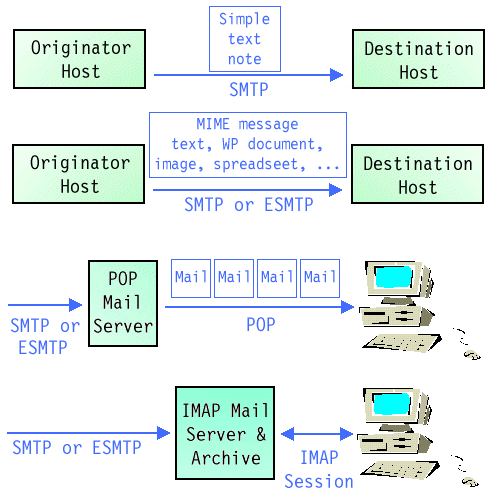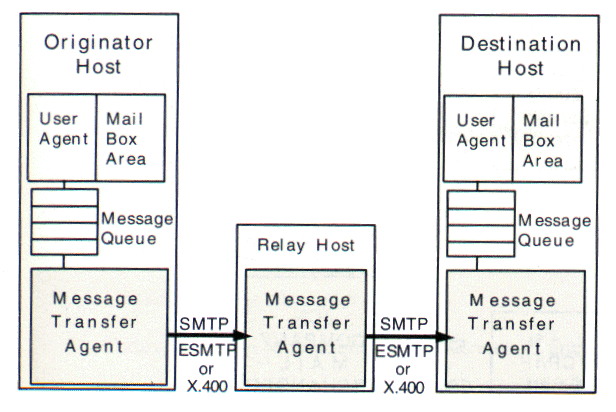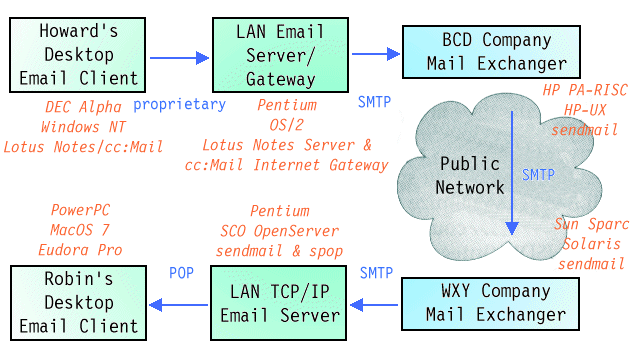e-mail is a convenient way to reach people
the formal name for an end-user mail program is a User Agent (UA).

SMTP - Simple Mail Transfer Protocol ESMTP - Extensions to SMTP POP - Post Office Protocol MIME - Multipurpose Internet Mail Extensions IMAP - Internet Mail Access Protocol


The way that it works is:
One or more computers are selected to act as Mail Exchangers for an organization.
A logical name - usually the organization's domain name - is selected for the Mail Exchanger, and a Mail Exchanger (MX) entry is added to the DNS database.
A Mail Transfer Agent (MTA) program looks up the mail-domain-name part of the recipient identifier via DNS, retrieves the name and address of the Mail Exchanger for that domain name, and relays mail to the Mail Exchanger.
Each time that an item is relayed by a MTA, a timestamp is inserted, showing:
The Message-Id is added by the first MTA to handle the message.
View an email message that has been routed through several MTA's
Internet mail recipients are identified by names following the general pattern:
local-part@domain-name
For many years, the prevalent format for mail names was:
user@hostname e.g., hstern@krock.nyc.psvrn.com
Today, far more convenient formats are used, such as:
first-name.last-name@mail-domain-name e.g., mboldin@niagarac.on.ca michael.boldin@sympatico.ca mbboler@hotmail.com mikeboldin@hotmail.com aa441@freenet.hamilton.on.ca boldinm@freenet.hamilton.on.ca aa441@hwcn.org boldinm@hwcn.org mike@tsb.ca mike@email.tsb.ca Mike_Boldin@email.tsb.ca Michael_Boldin@fp.cibc.com boldinm@cibc.ca
These convenient formats work because of the Domain Naming System (DNS).
A MIME message consists of a set of headers and one or more body parts.
If there are multiple parts, one of the introductory headers consists of a string that will be used mark boundaries between parts.
The overall structure of the message and the type of information in each part is announced by Content-Type headers, e.g.:
Content-Type: MULTIPART/MIXED; BOUNDARY="xxxxxxxx" Content-Type: TEXT/PLAIN; charset=US-ASCII Content-Type: image/gif Content-Type: audio/basic
| 7 bit | Ordinary ASCII lines of text |
| quoted-printable | Mostly ASCII; a few special characters |
| base64 | Mapped to look like ordinary characters |
| 8 bit | A sequence of lines ending in <CR><LF> |
| binary | True binary data |
| x-token-name | Any experimental encoding (i.e., not part of the MIME standard); must be given a name starting with x |
View a MIME-compliant email message
 Back to the ELNC1221 Page
Back to the ELNC1221 Page